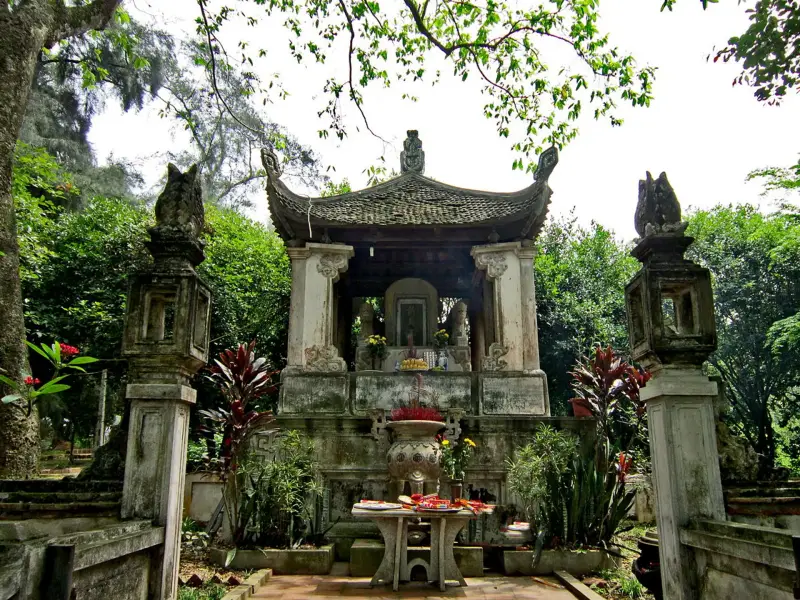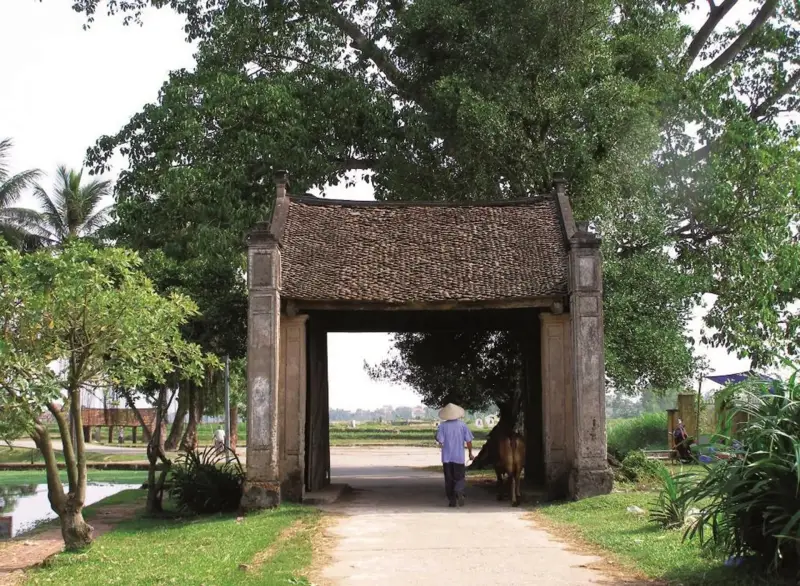
Duong Lam Ancient Village – A Hidden Gem Near the Capital
Located just 44 km from Hanoi, Duong Lam Ancient Village offers a peaceful retreat for those seeking solace from the hustle and bustle of city life. Known for its charming countryside vibe, the village is home to ancient architectural gems, including brick-paved roads, laterite walls, and traditional northern cultural features. Dive into the latest travel insights and experiences to make the most of your visit to this serene destination.
Where is Duong Lam ancient village?
Nestled in Son Tay District, Hanoi, Duong Lam Ancient Village lies only 44 km from the heart of the city. It is famously known as the “land of two kings,” being the birthplace of national heroes Ngo Quyen and Phung Hung. Recognized as Vietnam’s first National Historical and Cultural Relic in 2006, Duong Lam retains the quintessential features of a northern village. With its ancient gates, banyan trees, water wharves, communal courtyards, and 956 traditional houses, it offers a unique glimpse into the country’s past.
Best Time to Visit Duong Lam Ancient Village
Duong Lam is a year-round destination, but two particular times stand out: the festive season and the ripe rice season.
- Festive season
The festive season, held in the first lunar month, is a vibrant time to explore Duong Lam. Mong Phu Village’s traditional festival, taking place from the 4th to the 10th of the month, is the highlight of the year. This sacred event is held at the oldest communal house in the village and features ceremonies with offerings of pigs, chickens, and other items, followed by lively folk games such as human chess, blindfolded duck-catching, and cockfighting.
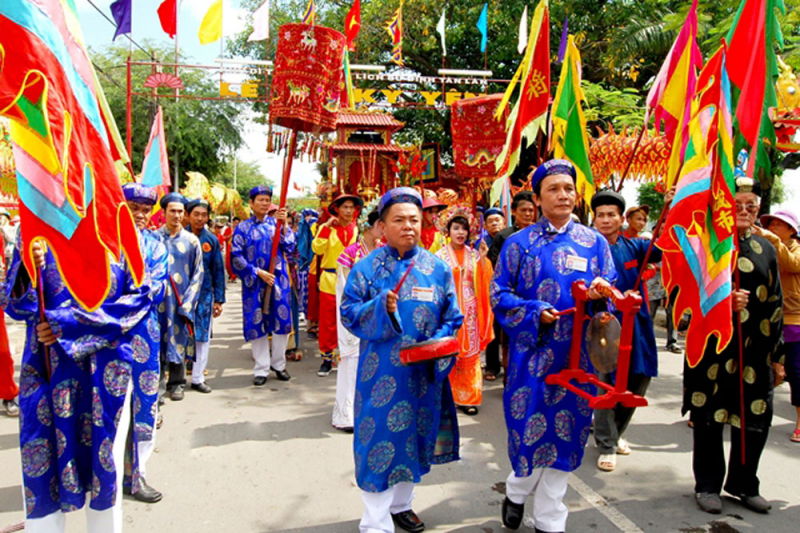
- Ripe rice season
From May to June each year, Duong Lam Ancient Village transforms into a picturesque landscape during the ripe rice season. The golden rice fields, ready for harvest, attract visitors eager to witness this serene countryside charm. During this time, the village roads are adorned with drying rice and straw, creating a tranquil, rustic ambiance that perfectly captures the essence of a traditional Vietnamese village. This is one of the most beautiful and peaceful moments to experience Duong Lam at its best.
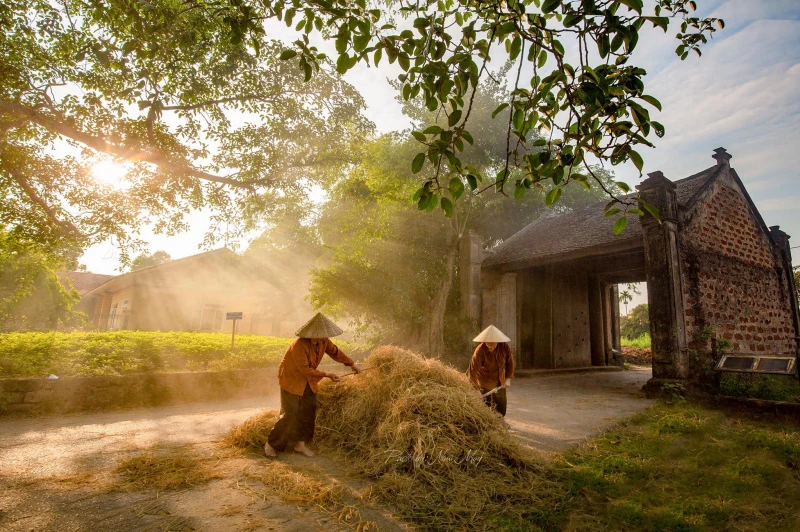
Mong Phu village gate
Mong Phu Gate is the only ancient village gate still standing in Duong Lam, a testament to the village’s rich history. Built during the Later Le Dynasty, this gate features an architectural style distinct from traditional village gates. Resembling a house, it boasts two sloping roofs supported by sturdy pillars, with the upper section designed in the “upper family Xiamen” style, where the gate serves as the base and a house-like structure rests above.
The gate, along with the iconic banyan tree, water wharf, and lotus pond, forms a quintessential northern village scene, evoking the rustic charm of Vietnam’s bygone days.

Mong Phu village communal house
Built nearly 380 years ago, Mong Phu Communal House spans 1,800m² at the village center. Reflecting Vietnamese-Muong stilt-house architecture, it features two sections: the Dai Bai house, supported by 48 intricately carved wooden columns, and the harem.
Inside, cultural treasures like the “Old Dragon Trainer” painting and King Thanh Thai’s “Brave and Thinking” artwork are preserved, showcasing the village’s rich heritage. This iconic structure is a must-visit for its unique architecture and historical significance.
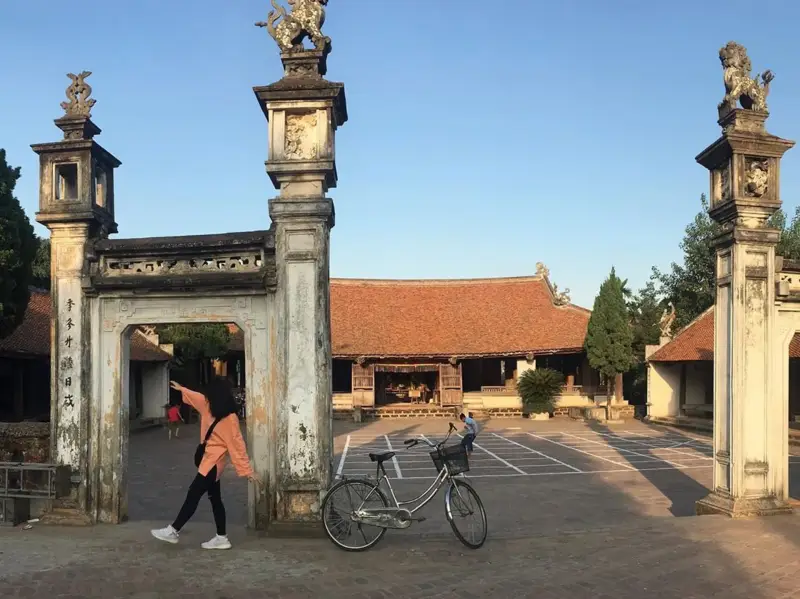
Church of Detective Giang Van Minh
Built during the reign of King Tu Duc, this church honors Detective Hoa Giang Van Minh for his significant contributions. Designed in the shape of the character “second” and facing south, it stands as both a historical and cultural landmark.
Today, the church attracts visitors eager to explore its historical significance and serves as a venue for educating younger generations about patriotism and tradition.
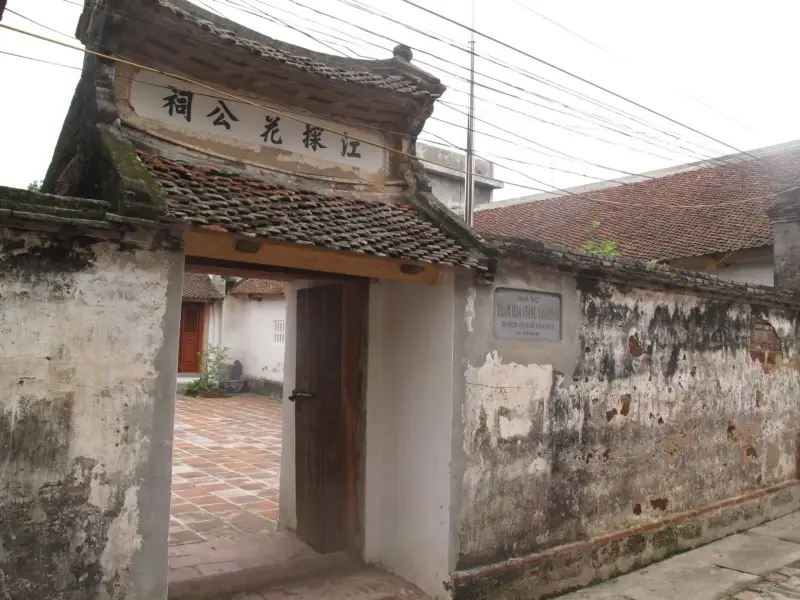
Old houses
Duong Lam Ancient Village is home to 956 traditional houses, some dating back to 1649, 1703, and 1850. These houses are crafted from traditional materials like laterite, oval wood, bamboo, terracotta bricks, and tiles, featuring 5 or 7-compartment designs that showcase the timeless architecture of the region.
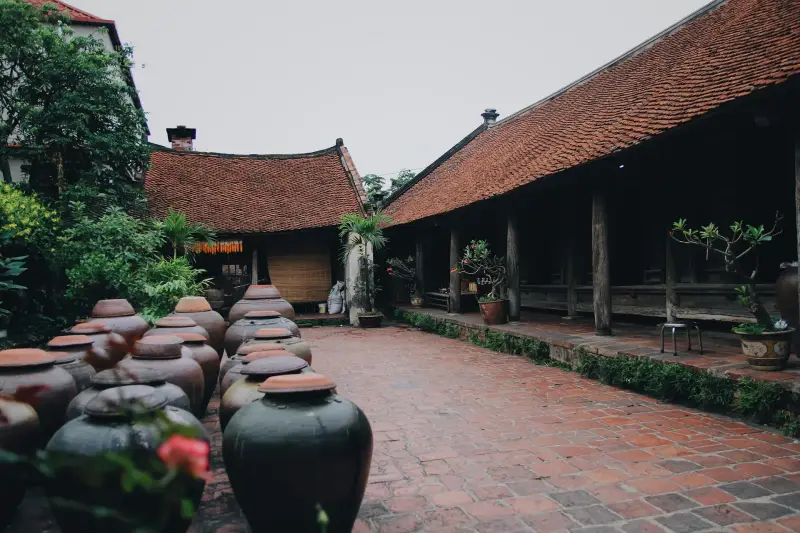
Duong Lam Ancient Well
In the past, the village well was the place where people got water for daily life. The ancient wells here are located in a high, cool place, near the communal house, pagoda, or the center of the hamlet.
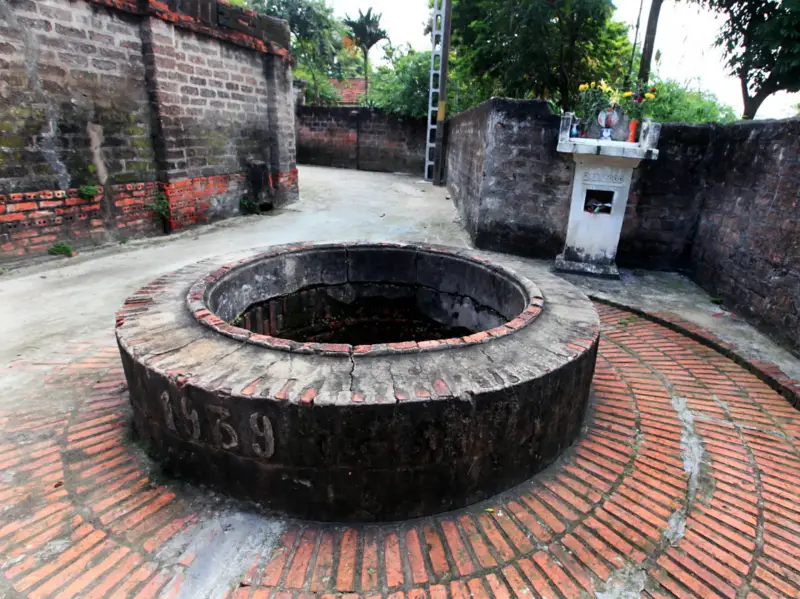
Temple of Phung Hung
Phung Hung led a successful uprising against the Tang Dynasty during Vietnam’s Northern colonial period, establishing an autonomous government and ruling for seven years.
To honor his legacy, many temples were built in his name, but the most sacred and significant is located in Duong Lam Ancient Village, his birthplace. This temple stands as a tribute to his contributions and draws visitors seeking to connect with Vietnam’s rich history
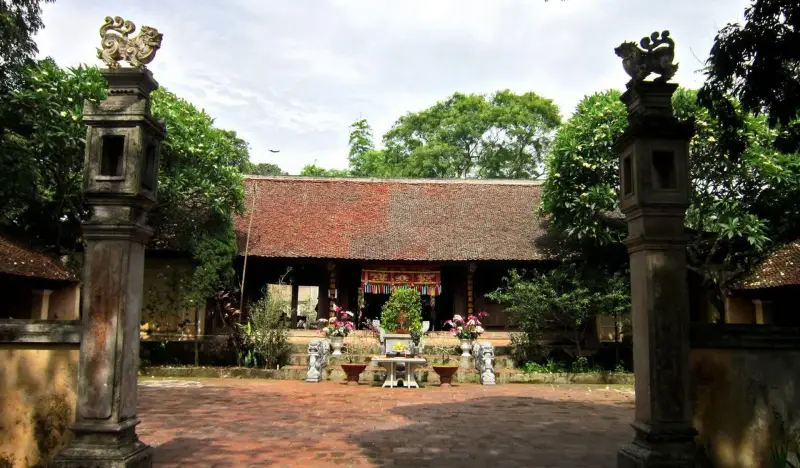
Mausoleum and Temple of Ngo Quyen
Located about 500 meters from Phung Hung Temple, the Ngo Quyen Mausoleum complex rests on Cam Hill, overlooking vast rice fields and the Lom Valley flowing into the Tich River.
The temple comprises a worship hall, a great cult area, a harem, and a stele house. Below the temple, approximately 100 meters away, lies King Ngo’s mausoleum, featuring a structure with four roofs atop a high pedestal, encircled by protective walls. This sacred site honors King Ngo Quyen, a pivotal figure in Vietnam’s history, and offers visitors a serene and meaningful experience.
